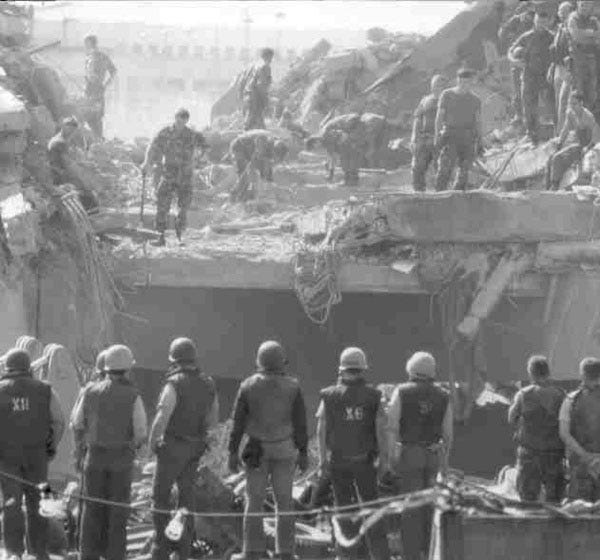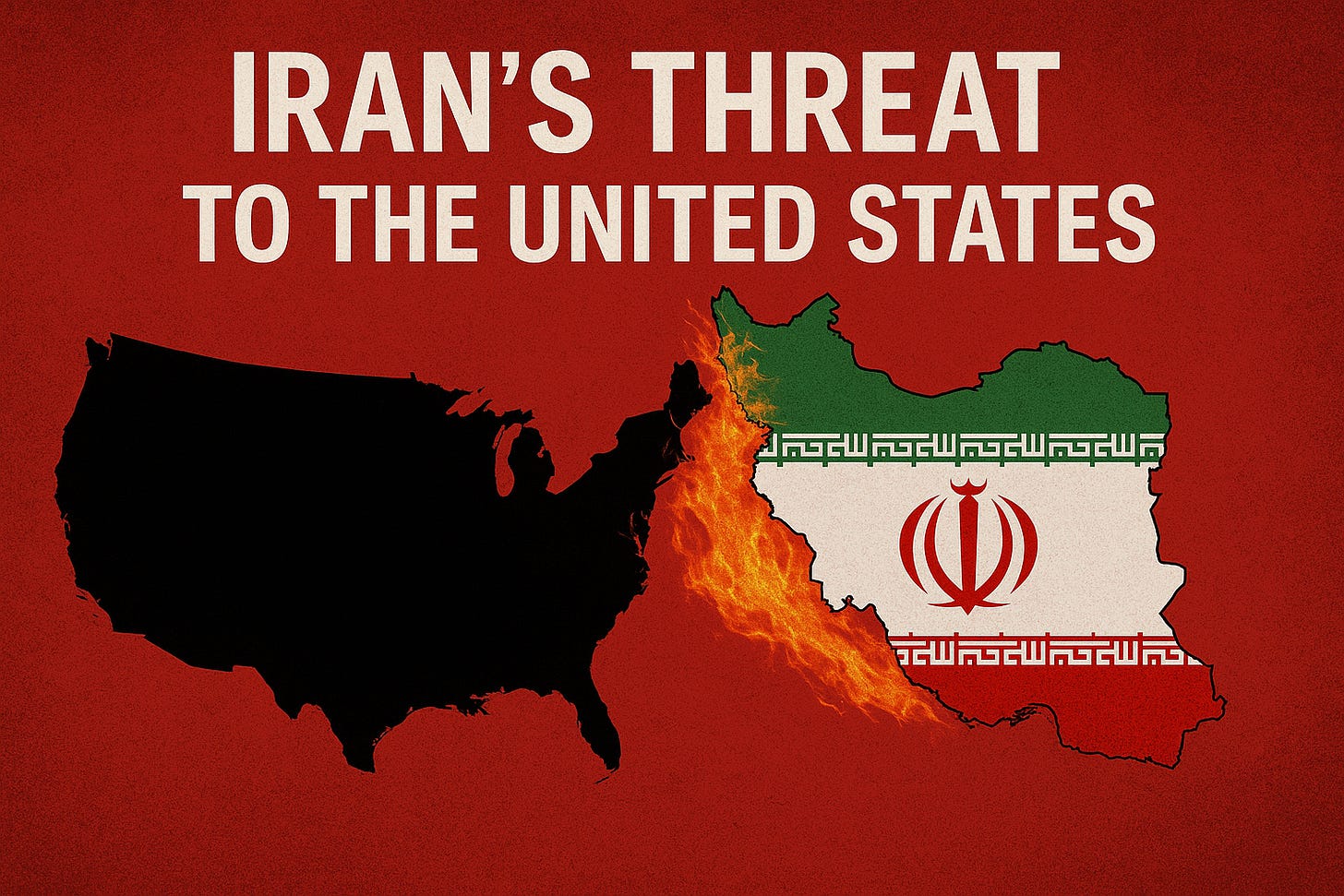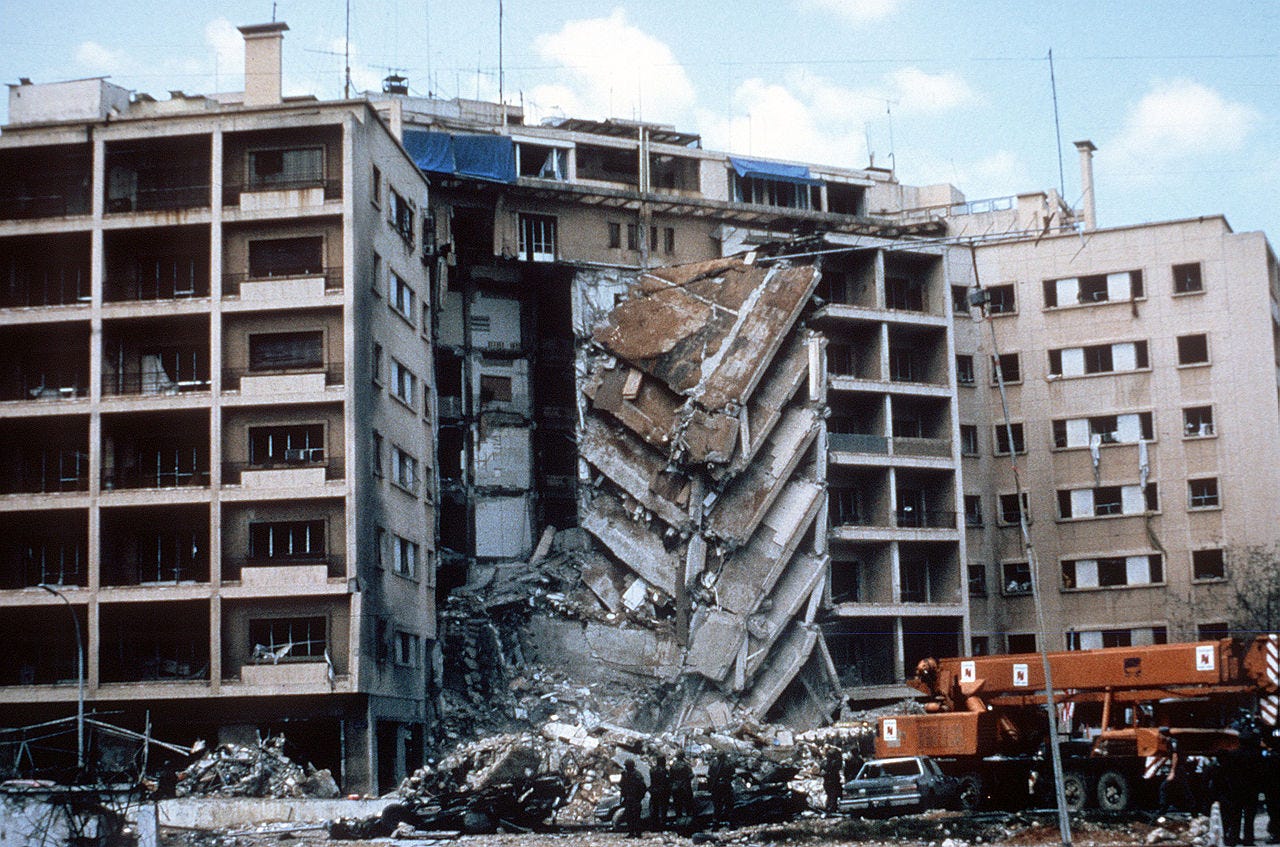Iran Has Killed Over 1,000 Americans. Why Are Some Still Defending It?
For more than four decades, Tehran has waged war on the United States—from bombing Marines to plotting assassinations on American soil. Pretending otherwise is delusional and dangerous.
Since the 1979 Islamic Revolution, the Iranian regime has consistently threatened the lives and interests of Americans. Over the past four decades, Iran and its proxies have killed more than 1,000 Americans—including U.S. service members, diplomats, and civilians—through bombings, targeted attacks, and terror operations. Through direct violence, proxy warfare, terrorism, cyberattacks, and political subversion, Iran has waged a sustained campaign against the United States. This threat spans multiple continents and affects civilians, diplomats, soldiers, and public officials. At the same time, Iran’s pursuit of nuclear weapons represents a looming strategic threat that could dramatically shift the balance of power and embolden Tehran’s aggression under a nuclear umbrella.
The notion promoted by some commentators that Iran poses no threat to Americans—or that opposing Iran’s ambitions, including assisting in neutralizing its nuclear capabilities, is somehow against U.S. interests—is not only misguided but flatly counter-factual.
Americans Killed by Iran and Its Proxies
Iran and its proxy groups have killed at least 603 American troops in Iraq alone, largely through explosively formed penetrators (EFPs) and other lethal aid to Shia militias. Add to this the 241 Marines, sailors, and soldiers killed in the 1983 Beirut barracks bombing, the19 Airmen killed in the 1996 Khobar Towers bombing, and at least 32 Americans murdered by Hamas since October 2023, and the confirmed death toll climbs dramatically. Civilian deaths include victims of the 1983 and 1984 Beirut embassy bombings, and the 1985 hijacking of TWA Flight 847.
Credible estimates suggest over 1,000 Americans have been killed by Iran or its proxies over the past four decades. That fact alone makes any claim dismissing Iran as a threat to American lives dangerously ignorant.
Plots to Assassinate or Harm U.S. Officials
Iranian intelligence and the IRGC’s Qods Force have planned or attempted assassinations on U.S. soil. In 2011, the U.S. foiled a plot to kill the Saudi ambassador in Washington—a scheme that could have killed dozens of Americans.
In 2022, an IRGC operative was charged with plotting to assassinate former National Security Advisor John Bolton. Former Secretary of State Mike Pompeo also remains under protective detail due to credible threats.
In 2021, Iranian operatives surveilled journalist Masih Alinejad’s home in New York in a foiled kidnapping plot. These plots show the absurdity of arguing that Iran poses no threat to Americans, especially when the regime has demonstrably targeted U.S. citizens and officials on American soil.

Hostage-Taking and Political Detentions
Iran pioneered modern hostage diplomacy. In 1979, 52 Americans were held for 444 days during the U.S. Embassy takeover in Tehran. In the 1980s, Iran-backed Hezbollah kidnapped and sometimes killed American civilians and officials in Lebanon, including CIA station chief William Buckley and Marine Col. William Higgins.
In recent years, Americans such as Jason Rezaian and Xiyue Wang, as well as Siamak and Baquer Namazi, have been imprisoned on dubious charges. These detainees are often used as leverage in negotiations with Washington. The frequency and brazenness of these detentions further debunk claims that Iran is a benign actor from the perspective of American national security.
Proxy Militias and Regional Terrorism
Iran has cultivated a wide network of proxy groups:
Hezbollah, backed by the IRGC, was responsible for the 1983 Beirut bombings and numerous hostage-takings.
Iraqi Shia militias, including Kata’ib Hezbollah and Asa’ib Ahl al-Haq, have received lethal aid from Iran and were responsible for hundreds of U.S. troop deaths in Iraq.
Hamas and Palestinian Islamic Jihad, long funded by Iran, have killed Americans in Israel, including during the October 2023 attacks.
The Houthis have targeted shipping and U.S. partners in the Gulf region using Iranian-supplied drones and missiles.
These groups not only serve as extensions of Iranian power but have also exported Tehran’s ideology and methods to multiple regions, creating a dangerous multiplier effect that has threatened U.S. allies and personnel alike. Ignoring this network in favor of an idealized view of diplomacy ignores the operational reach of Iran’s malign influence.
Cyberattacks and Election Interference
Iranian cyber units have attacked U.S. banks and infrastructure. In 2016, seven IRGC-affiliated hackers were charged for a widespread DDoS campaign and for accessing control systems at a New York dam. These cyberattacks represent a low-cost, high-impact way for Iran to undermine U.S. financial systems and public confidence.
In 2020, Iran tried to influence the U.S. presidential election by sending spoofed emails and releasing disinformation targeting voters. The campaign aimed to exploit domestic political divisions and cast doubt on democratic institutions. These actions clearly contradict any suggestion that Iran does not pose an active threat to American sovereignty and democracy.
Ideological and Strategic Threats
Beyond tangible acts of violence, Iran presents an ideological challenge. The regime’s commitment to exporting the Islamic Revolution underpins its foreign policy and shapes its hostility toward the U.S. It has made "Death to America" and the destruction of "the Great Satan"—a term it uses to describe the United States—its ideological centerpiece and guiding mission. Viewed through this lens, terrorism, cyberwarfare, and disinformation are tools of a broader mission.
Iran’s leadership often frames its struggle as resistance against Western imperialism. This worldview justifies its involvement in proxy wars, development of ballistic missiles, and attempts to destabilize governments seen as U.S. allies or puppets. The strategic outcome is a fragmented region in which Tehran maintains asymmetric leverage.
Downplaying this ideology as harmless posturing ignores how it has fueled real-world violence. To argue that such a regime poses no threat to the U.S. homeland or American lives abroad is not just naive—it is demonstrably false.
On multiple occasions, Iranian operatives have attempted to assassinate President Donald Trump, who is now in his second term in office, viewing him as a top target following his administration's strong stance against Tehran, including the targeted killing of IRGC General Qassem Soleimani.
Conclusion
Since 1979, Iran has proven itself a persistent and multifaceted threat to Americans. Its direct and proxy actions have killed or wounded over a thousand Americans, threatened public officials, and endangered civilians worldwide. Through military, cyber, and terrorist means, Iran continues to pursue policies that put American lives at risk.
This challenge is not simply about isolated incidents. Iran’s long-term strategy to undermine the U.S. hinges on multiple layers—violent and covert, strategic and ideological. Its actions span continents and domains, from kinetic attacks in Iraq to psychological operations online.
Despite sanctions and diplomatic isolation, Iran has maintained its capabilities and expanded its reach. Its alliances with other authoritarian powers and non-state actors pose further complications for U.S. responses. Any comprehensive national security strategy must account for Iran’s ability to act indirectly, deniably, and persistently.
With over four decades of evidence, the record is clear: Iran’s hostility toward the United States is not just rhetoric. It has been consistently expressed in blood, in plots, and in a relentless campaign to reshape the balance of power in the Middle East. The Iranian threat to Americans is real, enduring, and demands continued vigilance.
That’s why the idea, promoted by some, that helping to confront or constrain Iran—especially its nuclear weapons ambitions—is not worth U.S. attention is absurd. It contradicts decades of clear intelligence, military evidence, and American blood spilled at the hands of the Iranian regime and its agents. And when a regime openly calls for death to America and targets a sitting U.S. president for assassination, dismissing that threat borders on willful negligence.




